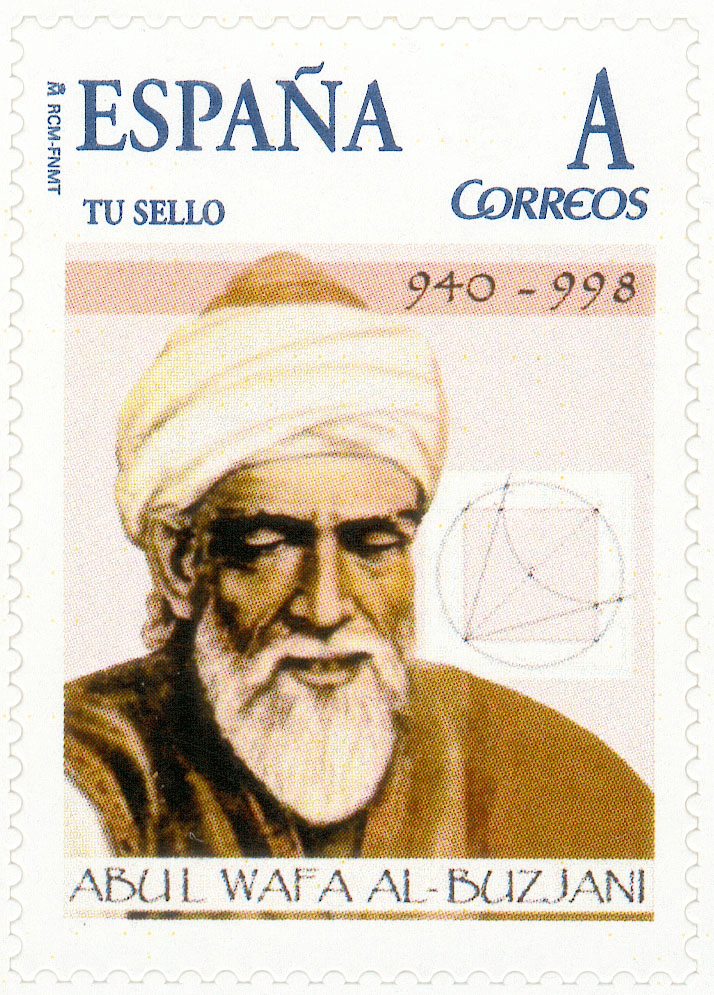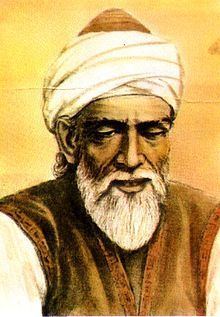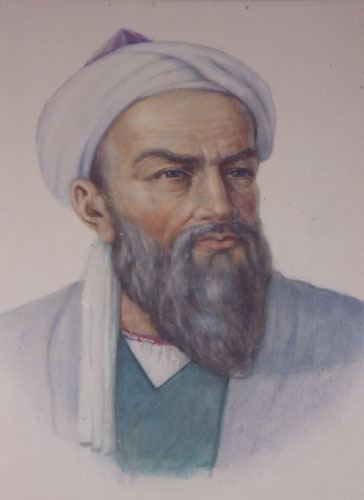Name Abu Buzjani | Role Mathematician | |
 | ||
Born June 10, 940Buzhgan ( 940-06-10 ) Major works Almagest of Abu al-Wafa' Died July 15, 998 AD, Baghdad, Iraq | ||
Abū al-Wafāʾ, Muḥammad ibn Muḥammad ibn Yaḥyā ibn Ismāʿīl ibn al-ʿAbbās al-Būzjānī or Abū al-Wafā Būzhjānī (Persian: ابوالوفا بوزجانی or بوژگانی) (10 June 940 – 15 July 998) was a Persian mathematician and astronomer who worked in Baghdad. He made important innovations in spherical trigonometry, and his work on arithmetics for businessmen contains the first instance of using negative numbers in a medieval Islamic text.
Contents

He is also credited with compiling the tables of sines and tangents at 15 ' intervals. He also introduced the secant and cosecant functions, as well studied the interrelations between the six trigonometric lines associated with an arc. His Almagest was widely read by medieval Arabic astronomers in the centuries after his death. He is known to have written several other books that have not survived.

Life

He was born in Buzhgan, (now Torbat-e Jam) in Khorasan (in today's Iran). At age 19, in 959 AD, he moved to Baghdad and remained there for the next forty years, and died there in 998. He was a contemporary of the distinguished scientists Abū Sahl al-Qūhī and Al-Sijzi who were in Baghdad at the time and others like Abu Nasr ibn Iraq, Abu-Mahmud Khojandi, Kushyar ibn Labban and Al-Biruni. In Baghdad, he received patronage by members of the Buyid court.
Astronomy

Abu Al-Wafa' was the first to build a wall quadrant to observe the sky. It has been suggested that he was influenced by the works of Al-Battani as the latter describes a quadrant instrument in his Kitāb az-Zīj. His use of tangent helped to solve problems involving right-angled spherical triangles, and developed a new technique to calculate sine tables, allowing him to construct more accurate tables than his predecessors.

In 997, he participated in an experiment to determine the difference in local time between his location and that of al-Biruni (who was living in Kath, now a part of Uzbekistan). The result was very close to present-day calculations, showing a difference of approximately 1 hour between the two longitudes. Abu al-Wafa is also known to have worked with Abū Sahl al-Qūhī, who was a famous maker of astronomical instruments. While what is extant from his works lacks theoretical innovation, his observational data were used by many later astronomers, including al-Biruni.
Almagest
Among his works on astronomy, only the first seven treatises of his Almagest (Kitāb al-Majisṭī) are now extant. The work covers numerous topics in the fields of plane and spherical trigonometry, planetary theory, and solutions to determine the direction of Qibla.
Mathematics
He established several trigonometric identities such as sin(a ± b) in their modern form, where the Ancient Greek mathematicians had expressed the equivalent identities in terms of chords.
He also discovered the law of sines for spherical triangles:
where A, B, C are the sides (measured in radians on the unit sphere) and a, b, c are the opposing angles.
Some sources suggest that he introduced the tangent function, although other sources give the credit for this innovation to al-Marwazi.
Works
He also wrote translations and commentaries on the algebraic works of Diophantus, al-Khwārizmī, and Euclid's Elements.
